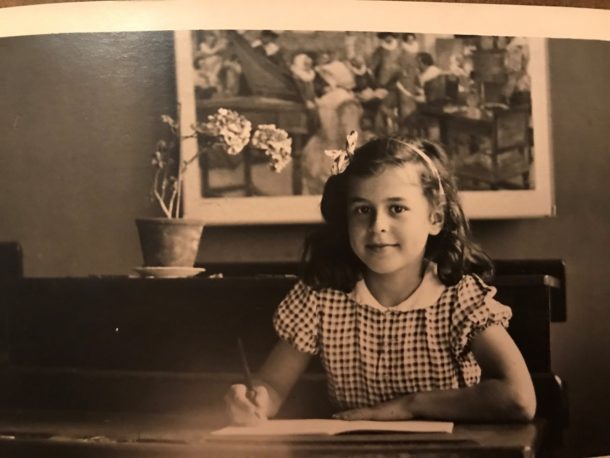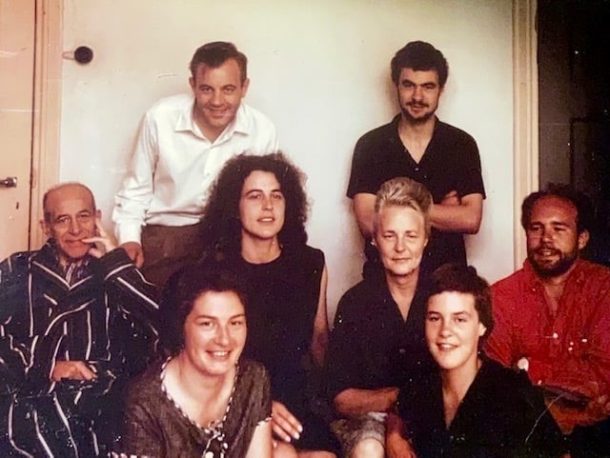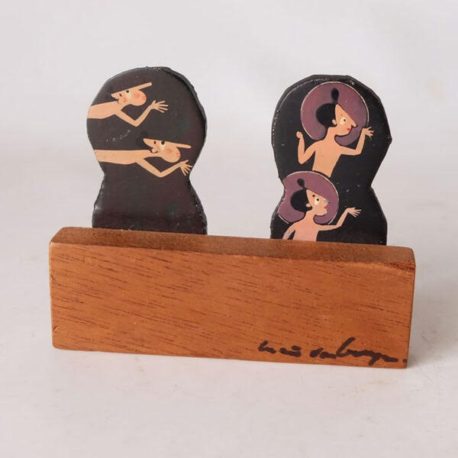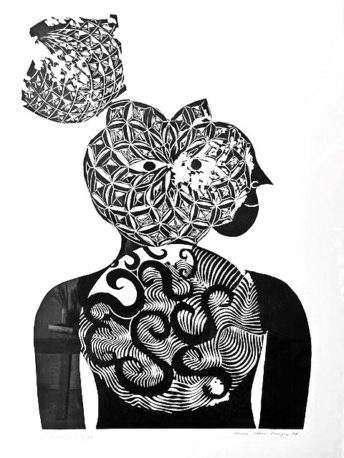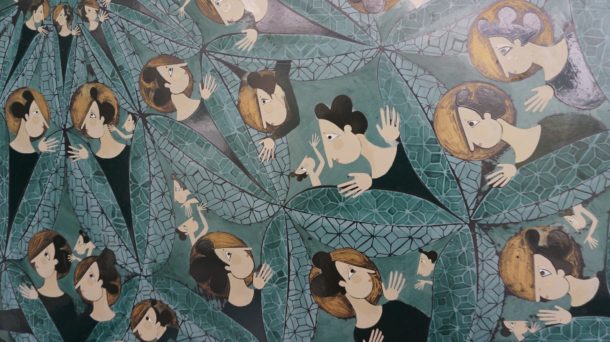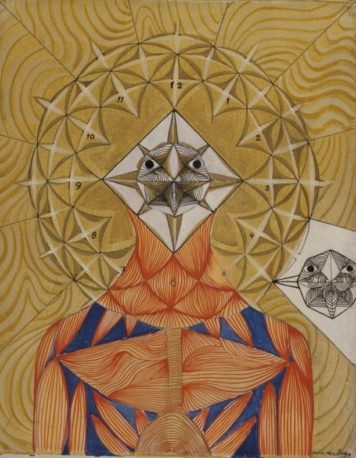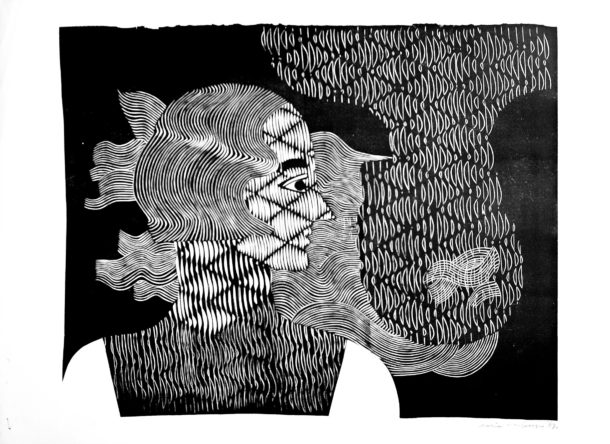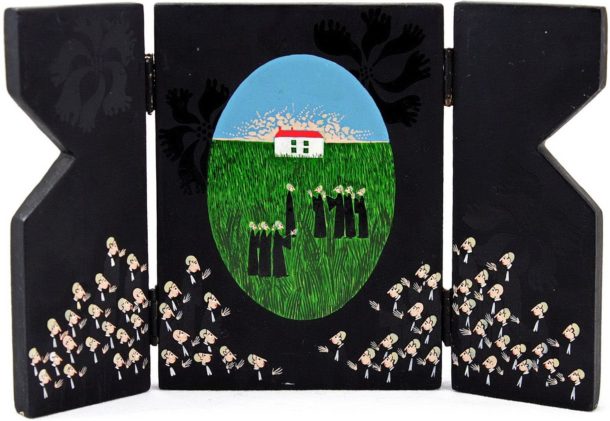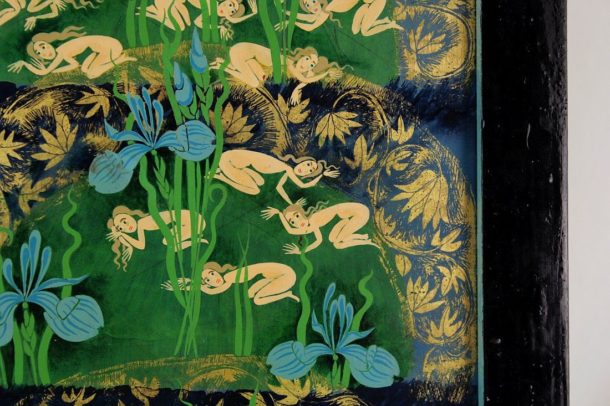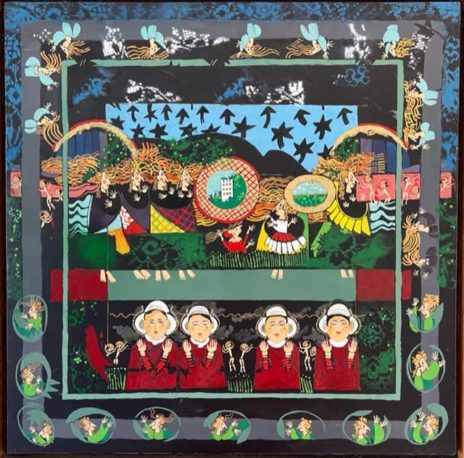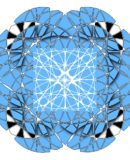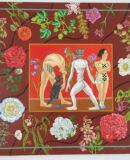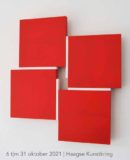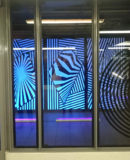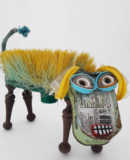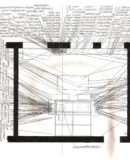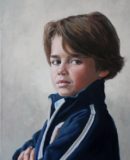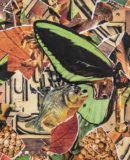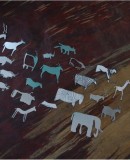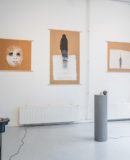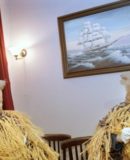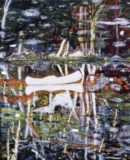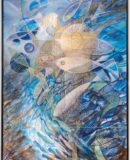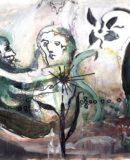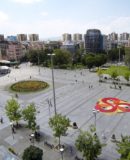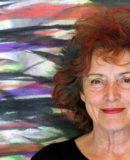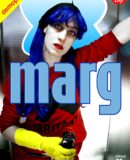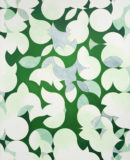World Fine Art Professionals and their Key-Pieces, 396 - Lucie van Duyn
World Fine Art Professionals and their Key-Pieces, 396 – Lucie van Duyn
In the sixties and seventies of the last century, Lucy van Duyn was a well-known Hague artist. She built up an impressive oeuvre of mainly graphic work. She also made sets for the experimental theatre group Studio Scarabee. Her work and her personality reflect the flourishing art circles of The Hague and their contemporaries, intellectuals and artists.
Roel van Duijn, her brother, recently wrote ‘Mijn zus Lucie, kunstenares en inspiratiebron, 1933 – 2013’ (‘My sister Lucie, artist and source of inspiration, 1933 – 2013’). He evokes beautiful images of the family in The Hague in the forties, fifties and sixties in a direct style. In the second part of the publication, Ella Arps, art connoisseur and gallery owner, takes a closer look at the artistic aspects of her work.
Sparkling girl
Lucie was an example for the ten years younger Roel, who would also become famous, but then as a political activist, writer and journalist. Lucie was a sparkling girl who wasn’t afraid of anything. Together they are waiting for the Canadians in May 1945 and waving to them. Both grew up in a theosophical family in which the writings of Mrs. Blavatsky – “thoughts are living beings” – formed a guiding principle. This, according to Roel van Duijn, is reflected in her work. “We children sang about sunbeams darting through the air as human thoughts dance through the cosmos. Lucie started painting them, I am now reconstructing.”
After the mistaken bombing of Bezuidenhout in 1945, the Van Duijn family, father, mother, three girls and three boys, moved to one of the side streets of Laan van Meerdervoort, Laan van Eik en Duinen. Lucie goes to the Drawing Academy on the Prinsessegracht (now the Royal Academy) and chooses the specialization Fashion Design.
A woman of many guises
Soon she comes home with a boyfriend from the HBS (High School): Thijs. When he breaks up with her, she has a major attack of excessive grief. Her brother sympathizes with her. After completing the academy, she marries the painter Johan de Haas, who is ten years her senior. She has a son with him. To the shock of the family, she wants to divorce him after a number of years. Johan becomes a teacher at the Art Academy in Arnhem and the child continues to live with him. Lucie moves into a studio in a demolition building near Hollands Spoor station. She earns her income from tours at the Costume Museum.
It was probably the combination of her attractiveness and complete autonomy through her artistic activities. She became a fascinating match for socially successful men. The artist Johan de Haas, George Lampe, also an artist and flamboyant director of the Free Academy (Vrije Academie), the prominent advocate general at the Supreme Court Baron Van Voorst, the millionaire Frits Sanders, all fell for her special qualities.
Father figures
Roel van Duijn writes: “She could fall madly in love, a heart on dancing feet. A new world opened up for her. They were father figures to her, I think, she had also followed our father in his advice to become an artist. She had, however, picked out the men she needed in her various phases. Johan, at the art academy when she wanted to become an artist. The Baron, when she wanted to work her way out of poverty and wanted to be able to paint carefree. The Holocaust victim, also a cosmopolitan when her possible Jewish origins fascinated her and she wanted to go out into the world.”
The real Lucie
However, the real Lucie is young Lucie, according to Roel. At sixty, she had no need for a new man. She returns from France in 1993 and moves into a spacious ground floor apartment in the Statenkwartier.
Work
Ella Arps was friends with Lucie for several years. She met her in 1964 in a small gallery next to café De Posthoorn on the Lange Voorhout, where the exhibition ‘Moving Movement’ was on display. In 1965 there was the playful exhibition ‘Art in Bed’ in the Hague Art Circle (de Haagse Kunstkring). The collaboration deepens when both work together in the experimental theater of Studio Scarabee. Lucie makes sets and Ella does publicity.
Poetic reality in geometric shapes
Ella Arps: “Lucie created a poetic reality in partially geometric shapes, shapes in the purest sense, which she then lets go up in smoke. She painted archetypes, mostly women, minuscule figures that seemed to come from another world and made triptychs with surprising effects. Her miniatures were fascinating, portraits the size of a postage stamp.”
At Scarabee, the theater productions were a diorama full of Tableaus Vivants. Ella: “It went towards the absurd. Something light was made from the heavy, perhaps characteristic of the post-war traumatized generation of artists.”
From 1963-1973 she worked with not the least: Woody van Amen, Hans Hollenbach, Lucebert, Herman Berserik. Scarabee’s Poppetgom production came at color television in 1968, something new at the time. The working style was labelled as metaphysical realism.
She is featured in Scheen’s almanac as a surrealist artist. But she should rather be placed with the Symbolists, says Ella Arps. “Symbolists have a penchant for the past and a focus on the subconscious. See, for example, the work of Charley Toorop. ”
Lucie was a member of Haagse Kunstkring for more than 50 years and also a member of Pulchri, where she regularly exhibited. Her legacy includes hundreds of fascinating graphic works. They are almost all sold.
The publication is published by Einstein Publishers and is distributed digitally through ISSUU.
You can read it here: https://issuu.com/einsteinpublishers/docs/mijn_zus_lucie
Request
In connection with the publication and a possible exhibition and the production of a complete biography, Ella Arps calls on collectors of Lucie van Duyn to photograph her work and send it to her. Email: ella.arps@gmail.com
The work of Lucie van Duyn is included in various private collections, and collections of Amsterdam Museum, municipality of Gouda, Museum de Fundatie Zwolle, art dealership Delta98 The Hague. Graphic work was included in the annual calendars of the Hague Art Circle 1966, 1969, 1971, 1973.
Images
1) Lucie at school, 1943, 2) The complete family, 1962, 3) Thoughts are living beings, oil, lacquer on mahogany, 2 cm thick, 6.5 cm, part of large panel, 1970, 4) Feesteling, linocut, 50 x 64.5 cm. 1963/65, 5) untitled, 6) untitled, mixed media with pen, 24 x 30 cm 1964, collection Museum De Fundatie, 7) Self-portrait and Apparitions, linocut, 60 x 40 cm. 1967, 8) Judge’s House, triptych, lacquer on wood, 16 x 11cm. 1974, 9) Landscape in gold foil, detail, 10) Ladies, Young and Old, mixed media on panel, 55 x 55 cm, 1980
https://issuu.com/einsteinpublishers/docs/mijn_zus_luciehttps://ifthenisnow.eu/nl/verhalen/lucie-van-duyn-een-bijzondere-haagse-kunstenaar
Disclaimer: The views, opinions and positions expressed within this guest article are those of the author Walter van Teeffelen alone and do not represent those of the Marbella Marbella website. The accuracy, completeness and validity of any statements made within this article are not guaranteed. We accept no liability for any errors, omissions or representations. The copyright of this content belongs to Walter van Teeffelen and any liability with regards to infringement of intellectual property rights remains with the author.

